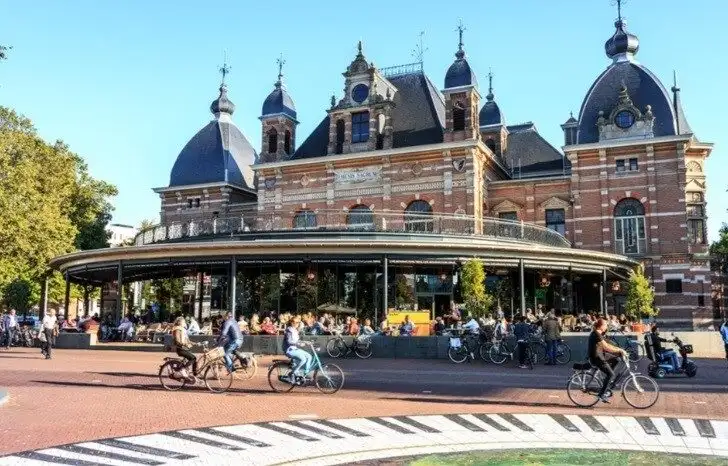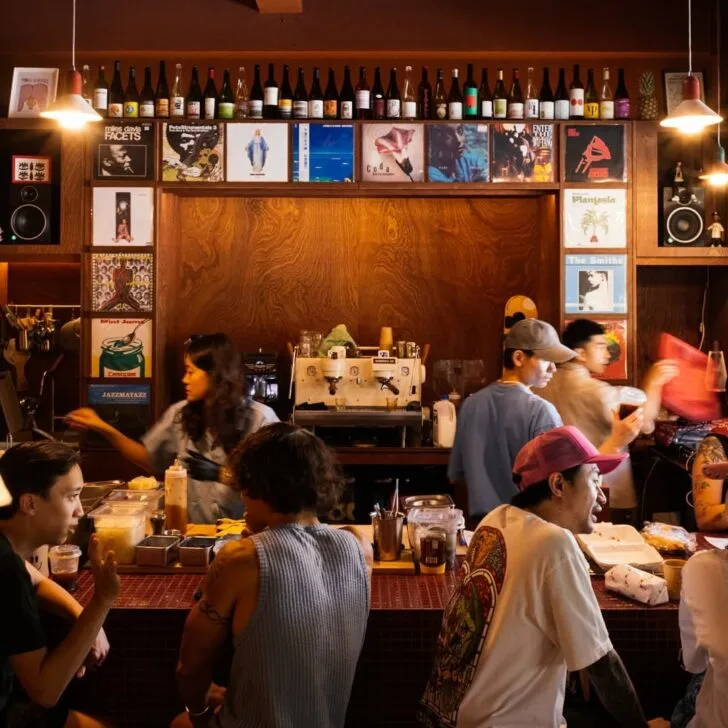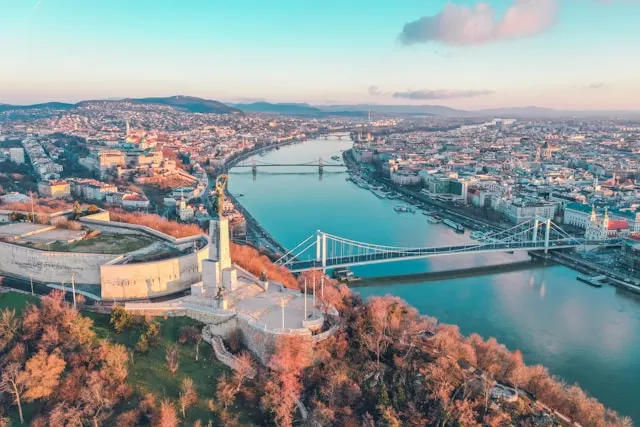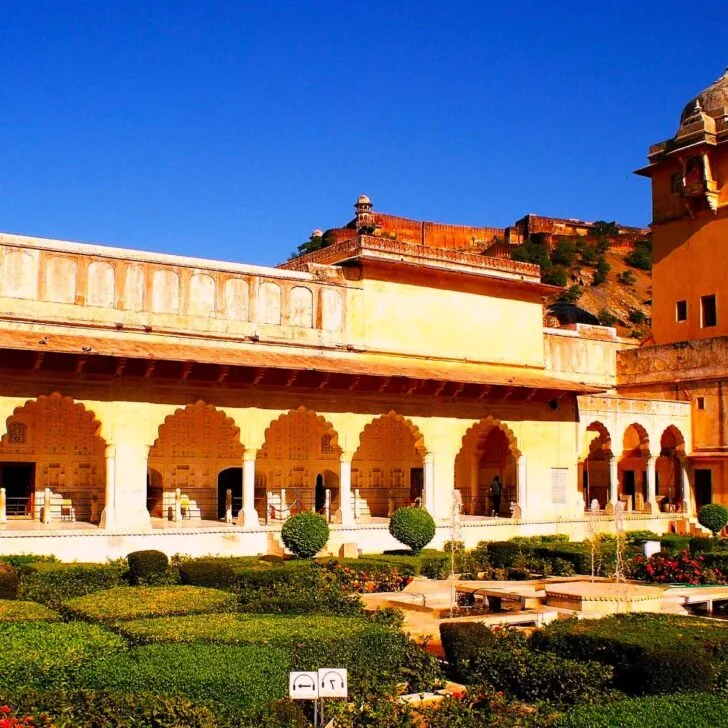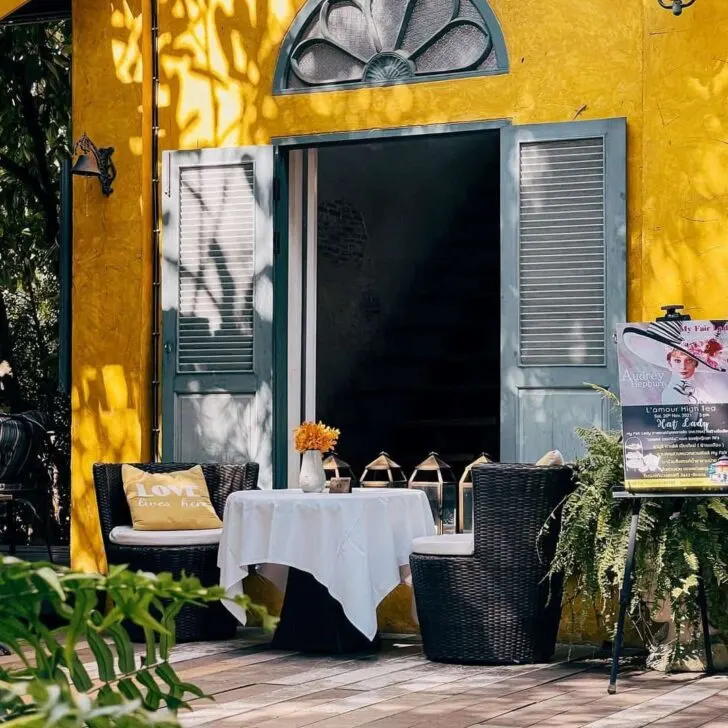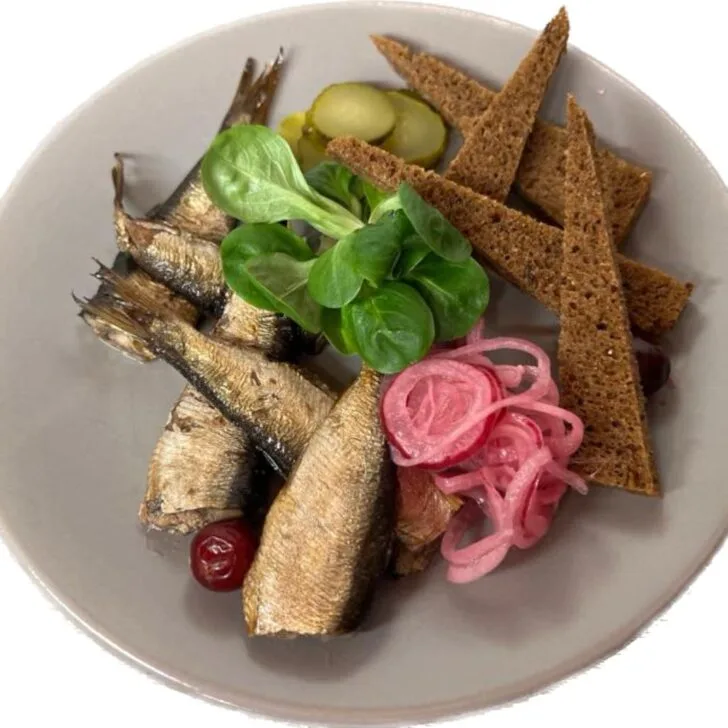We may receive a commission if you make purchases through affiliate links (at no extra cost to you). Read why our approach to travel is different.
Little can prepare you for the jaw-dropping beauty of Uzbekistan’s Silk Road cities. In Samarkand, I genuinely must have spent hours just sitting and staring at the Registan, and the intricate decorations of Bukhara’s Kalyan Mosque and Minaret still have a top place among my travel memories. On this Uzbekistan travel itinerary, you’ll see the most iconic Silk Road cities, as well as some of Uzbekistan’s other historical hidden gems, modern culture and Soviet heritage.
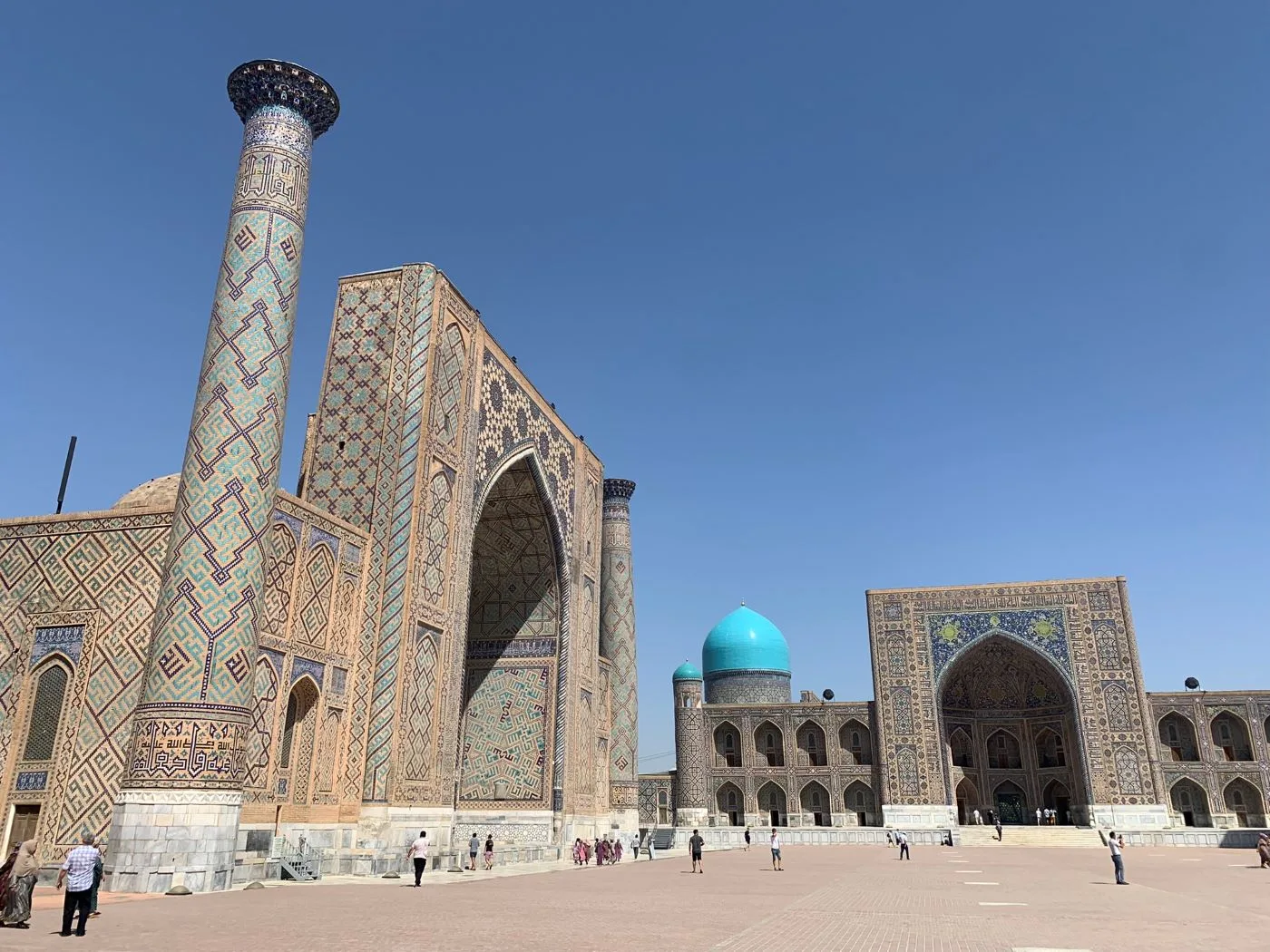
Slowly but surely, word is getting out about the wonders of Central Asia. For decades, “the Stans” were tricky places for foreigners to visit. Restrictive visa regimes and lack of awareness meant that only the most curious and patient Western tourists would venture here. For most Western nationals, Turkmenistan is the only Central Asian country requiring a bit more visa preparation.
But now, the promotion of tourism in Uzbekistan and loosening of visa policies for many nationalities now allows many more visitors to enjoy the country’s many wonders. What’s more, even budget airlines such as WizzAir and FlyDubai have opened up surprising routes to Uzbekistan. The historical jewel of Central Asia is now more accessible than ever.
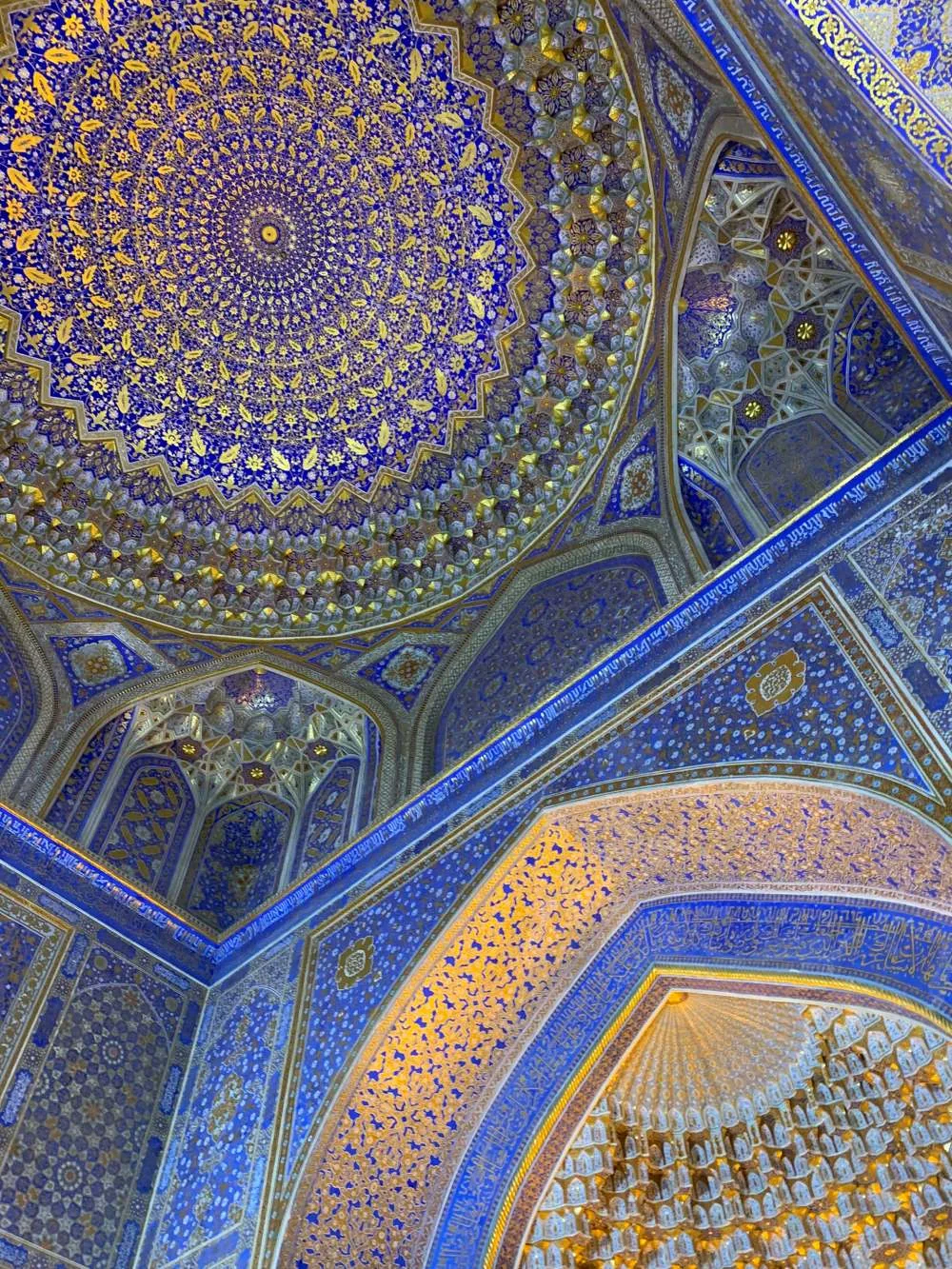
As with any country, one week may not be sufficient to soak it all in. But in this 7-day Uzbekistan travel itinerary, you’ll still get a really good feel for the truly unforgettable main sights of Uzbekistan.
Skip to...
Transport: Getting around Uzbekistan
It comes as a surprise to many, but Uzbekistan’s prime tourist cities of Tashkent, Samarkand and Bukhara are linked by impeccable high-speed railway service, rivalling that of any other country in the world. Slower, local trains also connect many of Uzbekistan’s other cities.
Since some travelers have difficulties buying tickets from overseas, train tickets are most conveniently bought through agencies, or by a pre-arranged tour.
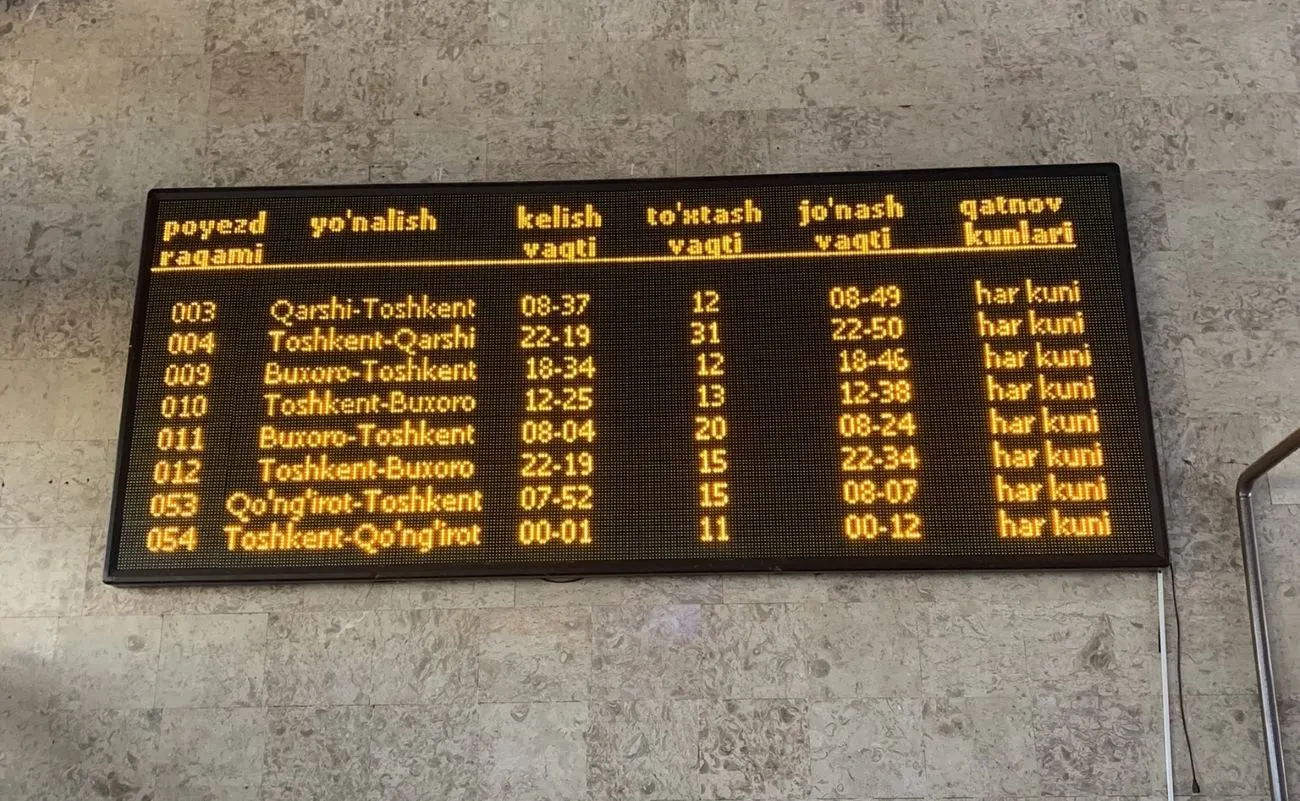
For smaller, local destinations out of the reach of trains, public transport comes in the form of shared minivans. These are much like the marshrutka vans elsewhere in the former Soviet Union. Finally, while it’s not really in the spirit of “Silk Road adventure”, domestic flights remain an option for those with more flexible budgets and tighter schedules.
Day 1: Tashkent
Uzbekistan’s capital, Tashkent, is a surprisingly large and cosmopolitan city. Tashkent’s broad avenues, tall buildings and monolithic concrete monuments speak of its important status during Soviet times. As it remains the most populous city of Central Asia, Tashkent also boasts interesting museums and plenty of Soviet heritage. For this reason, Tashkent definitely deserves at least one day of your Uzbekistan travel itinerary.
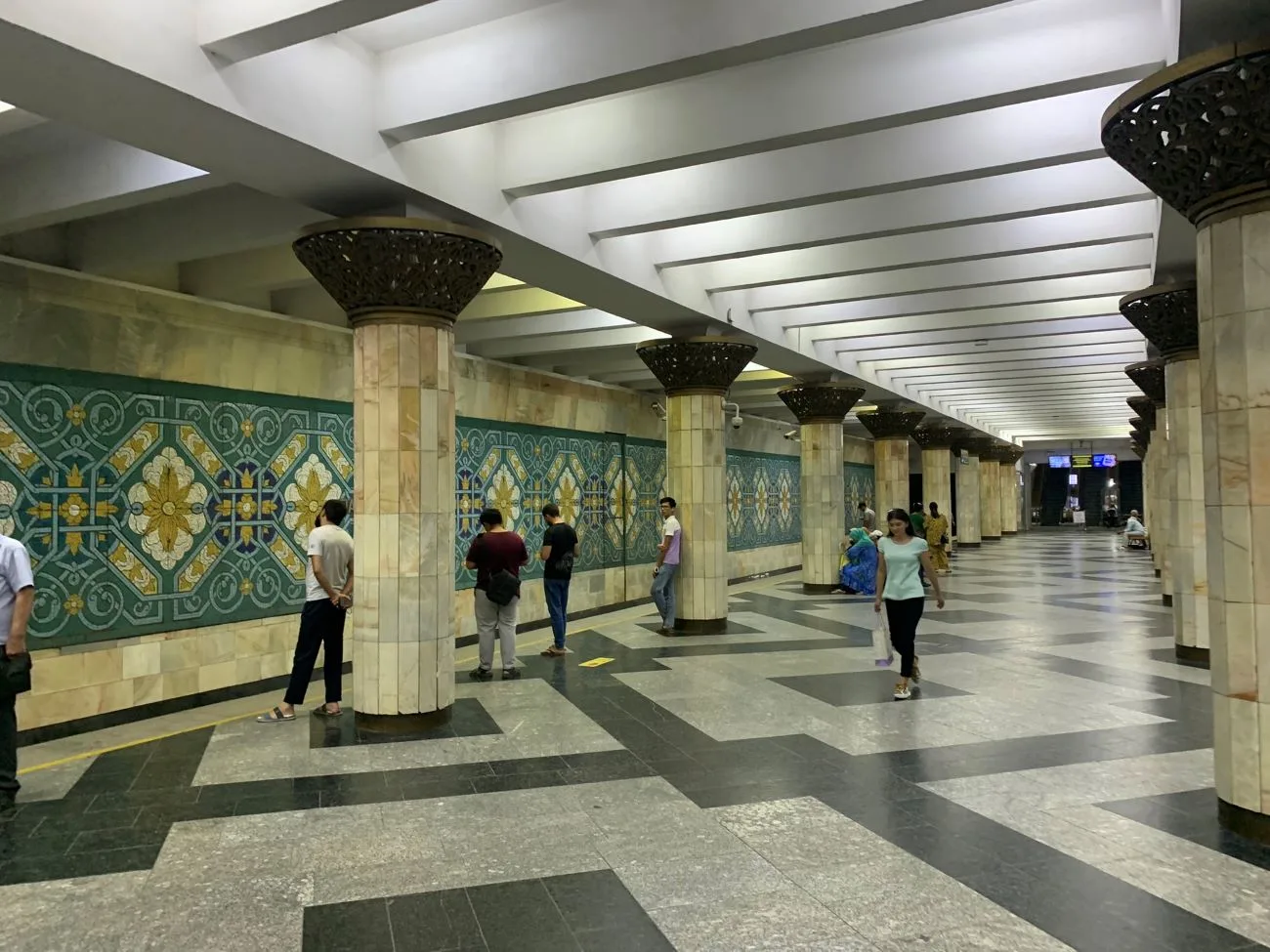
Top sights in Tashkent
Start out your day at Chorsu Bazaar, a bustling domed market selling spices, local food, handicrafts and clothing. Outside the main building, get lost in the sprawling lanes of the bazaar, and don’t forget to haggle. You could grab breakfast here before taking in the rest of Tashkent.
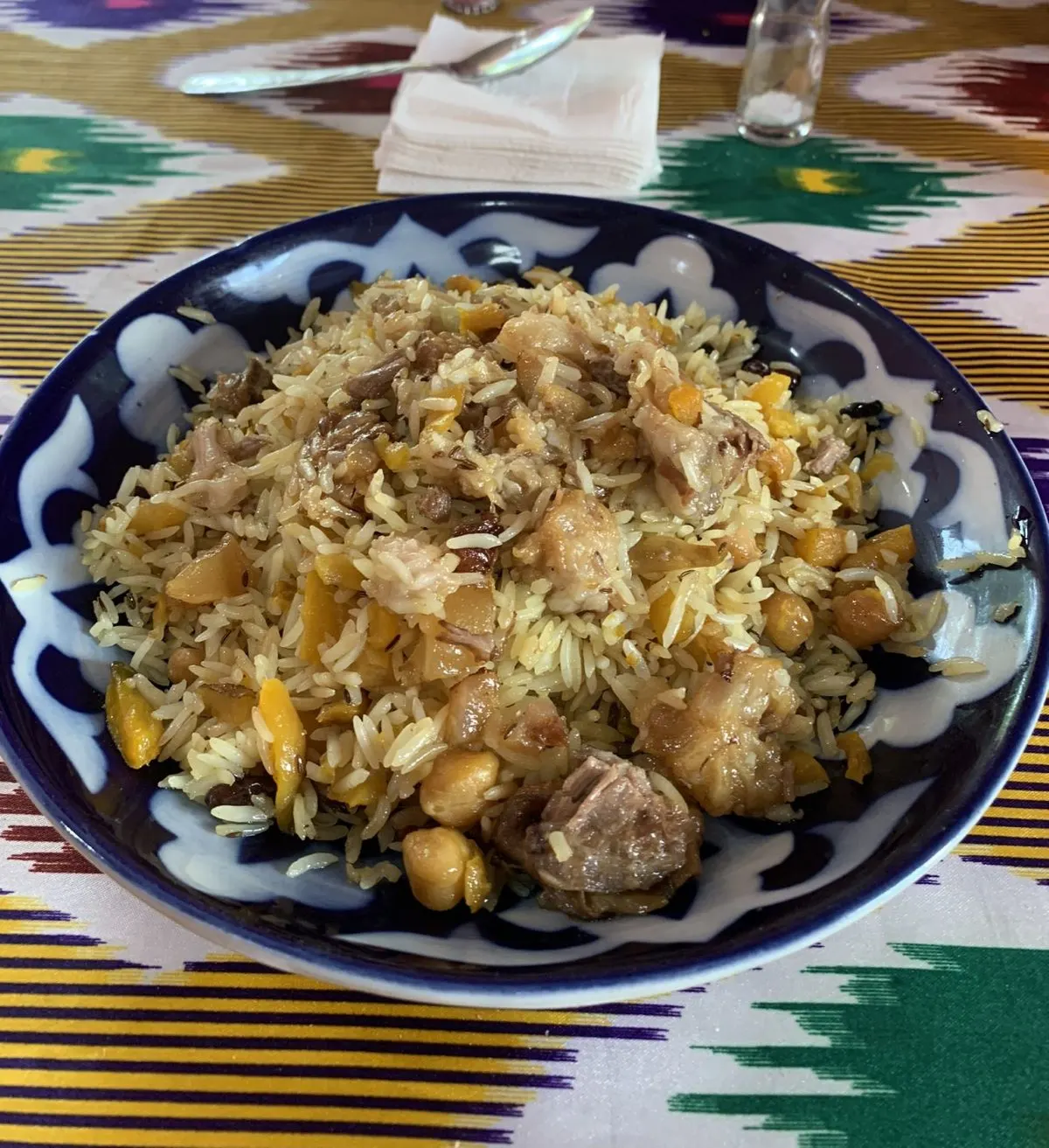
You’ll find many of the other noteworthy sights and museums near Amir Temur Square. The imposing Hotel Uzbekistan is perhaps the most quintessential vestige of the Soviet Union in all of Tashkent. At the State Museum of the Temurids, learn about the formidable yet brutal 14th century conquests of Tamerlane. If you’re lucky with timing, you could also take in a ballet or classical concert at the impressive Alisher Navoiy Theater.
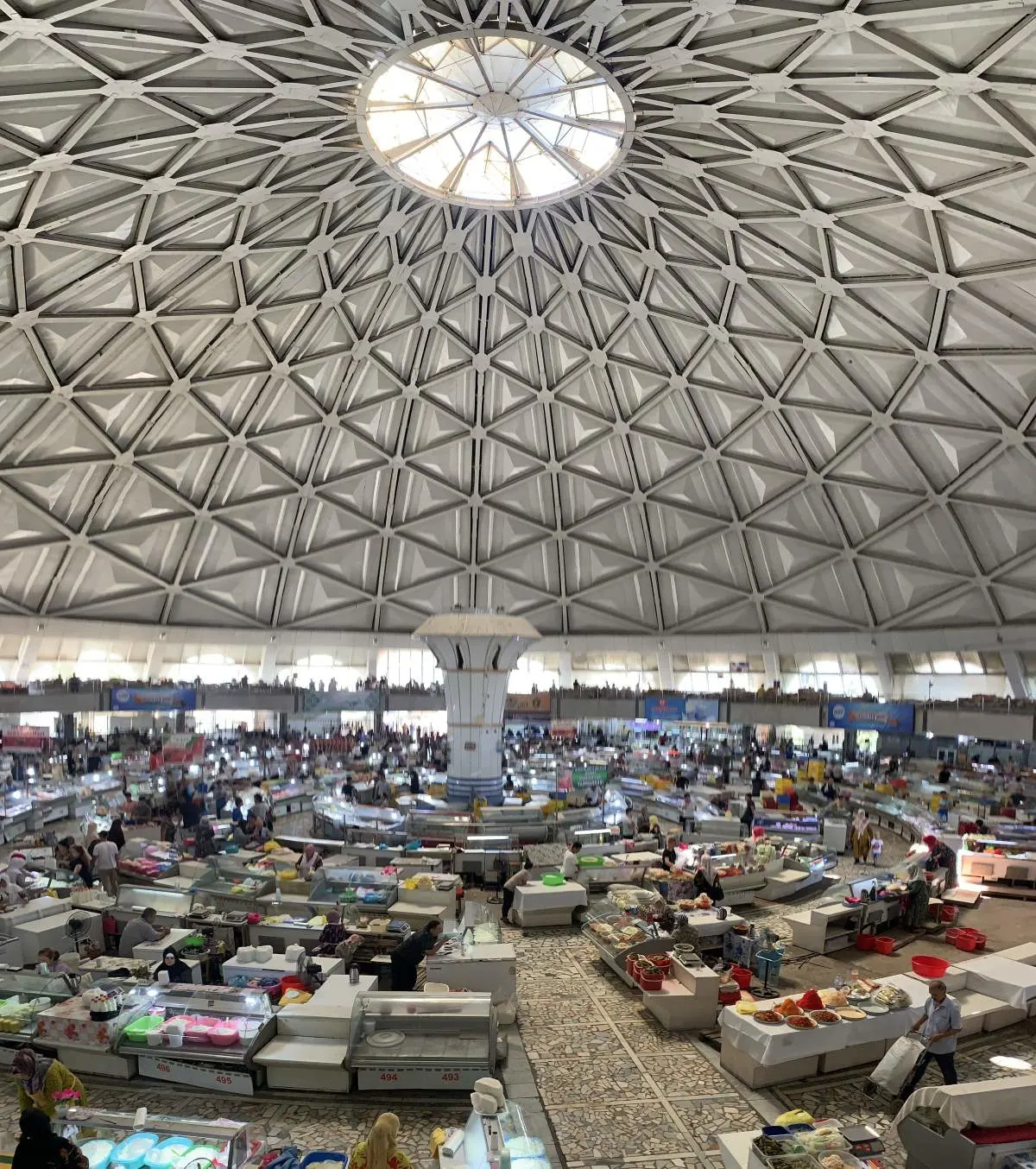
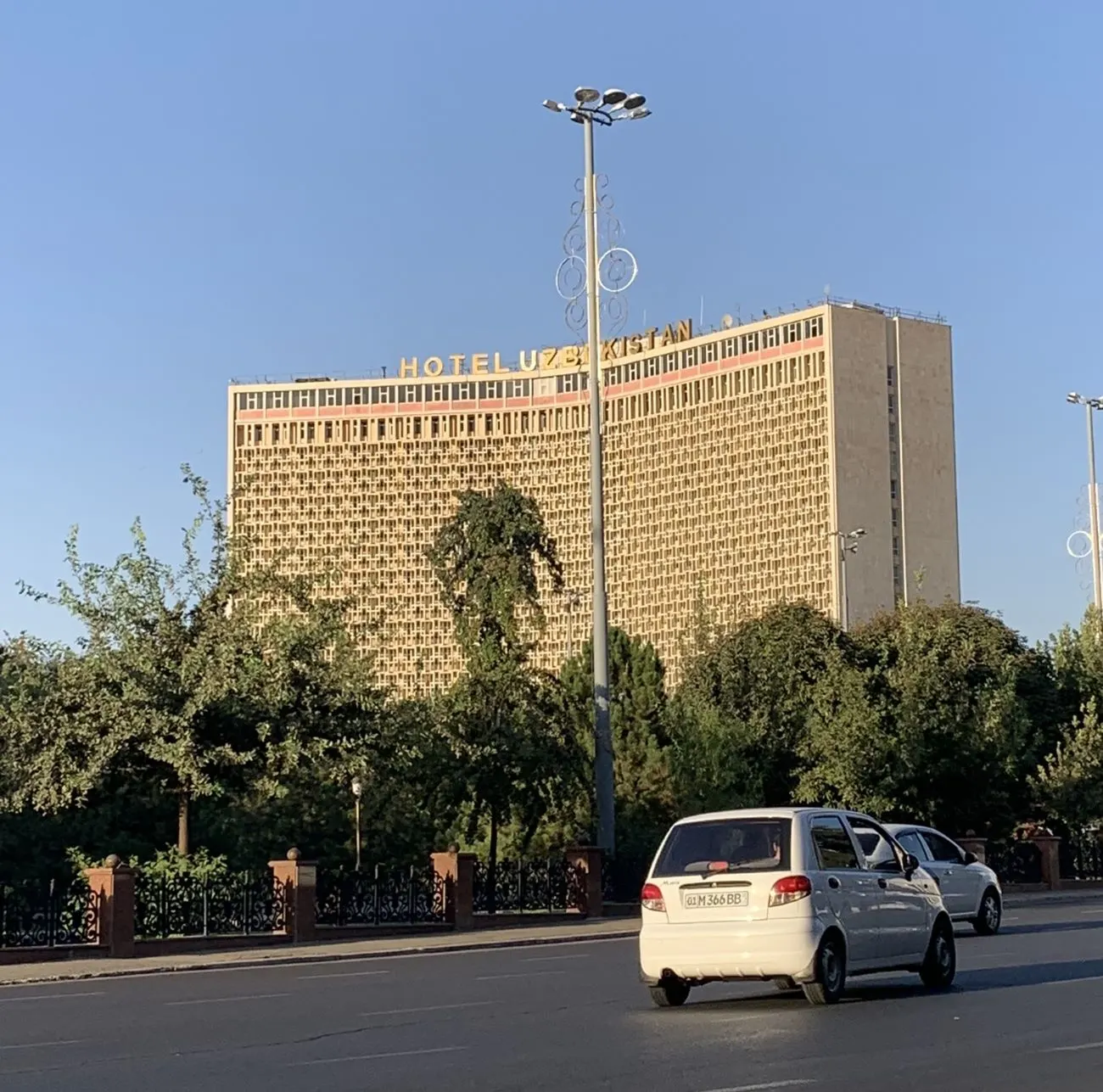
There are many nice green spaces all throughout Tashkent, which make for a generally pleasant atmosphere. If you’re less keen to explore on your own, or want a guide to help you navigate day 1, I’d recommend joining this Tashkent walking tour.
Days 2-3: Samarkand
I can’t quite put into words just how beautiful the historic city of Samarkand is. The UNESCO-designated city is truly a place like no other; it’s a city whose storied past speak of lost empires, brutal conquests, architectural feats, artistic wonders, immense wealth, and a melting pot of people, commodities and ideas from everywhere across the vast Eurasian continent.
The cumulative creation of the Achaemenid, Sogdian, Greek, Mongol, Timurid and Soviet empires, Samarkand deserves so much more international recognition.
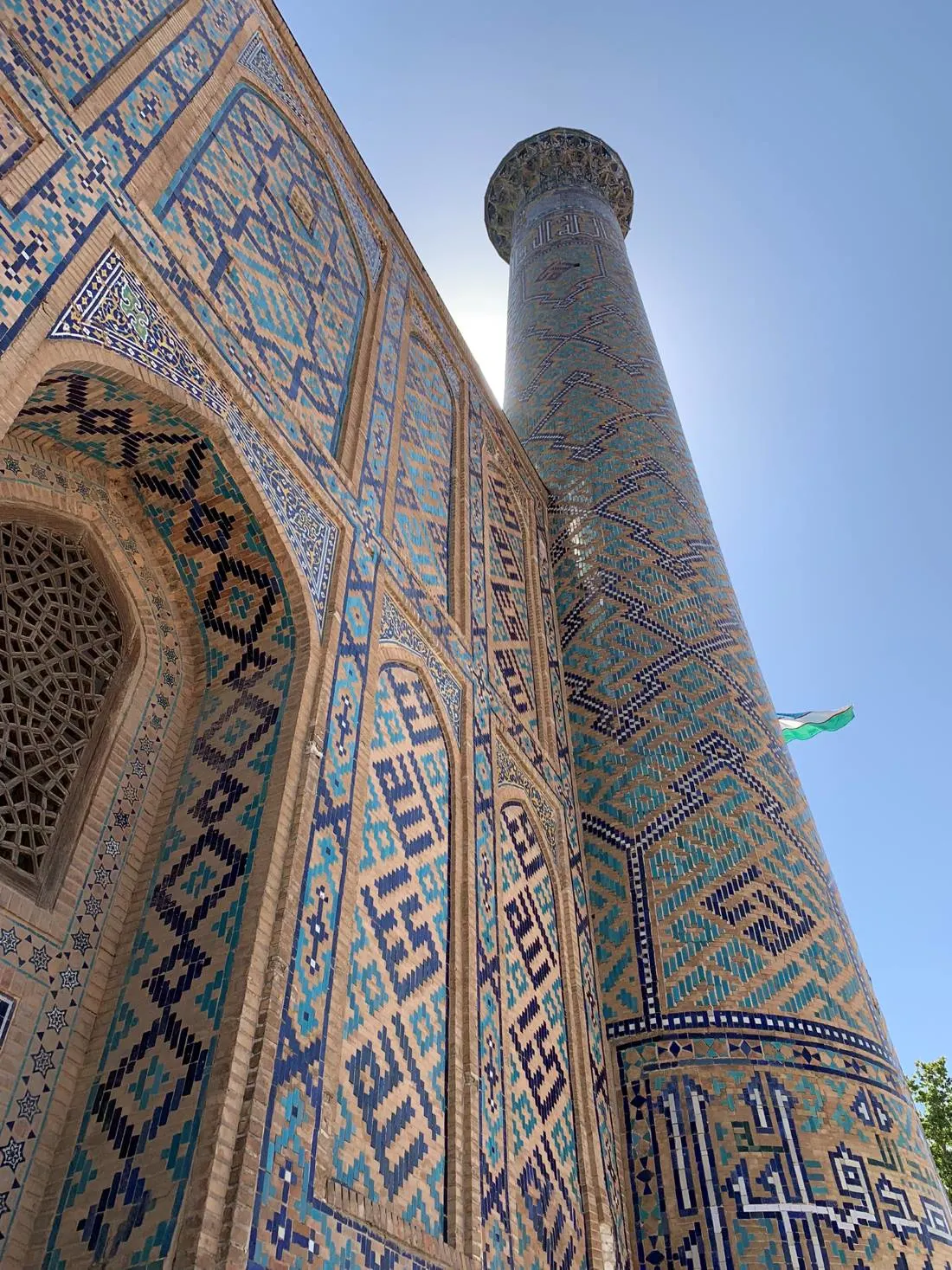
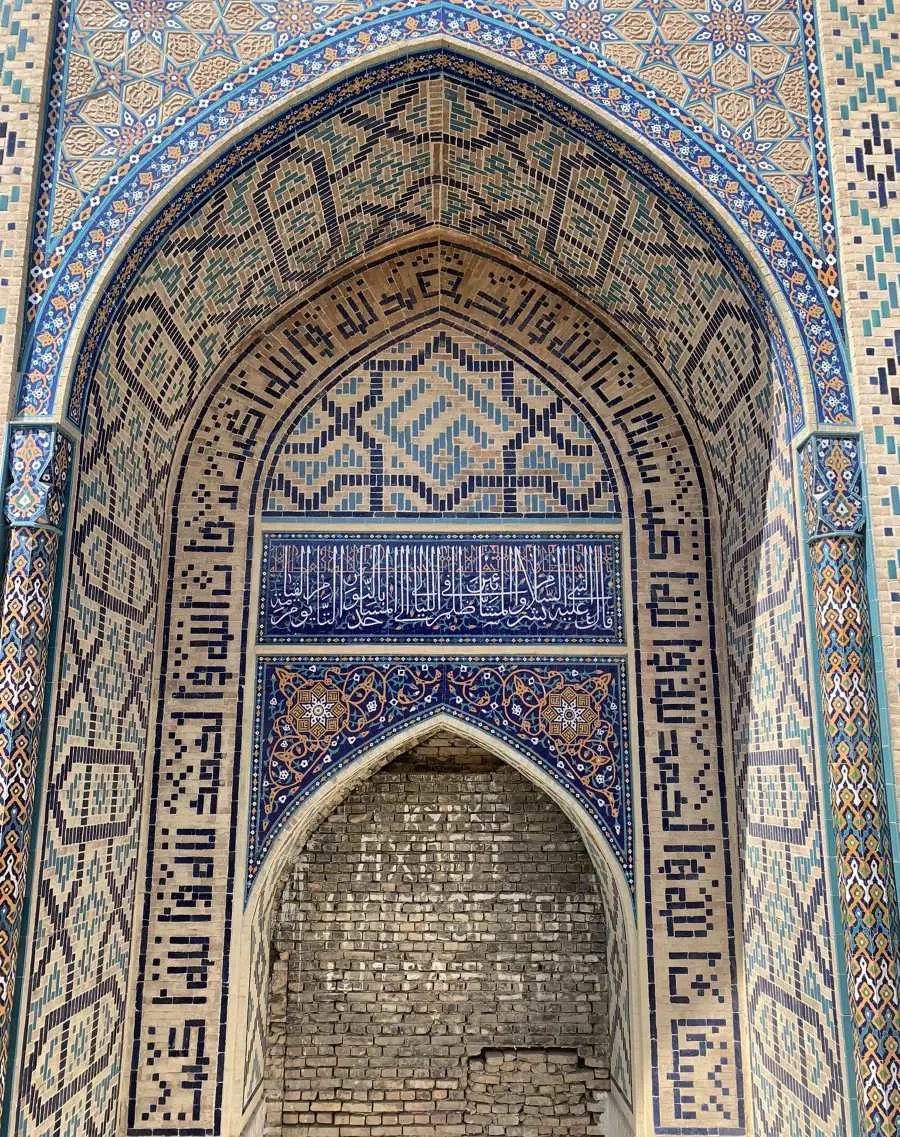

You’ll need an absolute minimum of two days to enjoy everything Samarkand has created over its millennia of varied and sometimes tumultuous history.
Top sights in Samarkand
Make sure that you don’t leave Samarkand without enjoying the following historical sights:
- The Registan: This square, surrounded on three sides by madrasahs (Islamic schools), is the absolute central point of Samarkand’s history, and an unmissable point on your Uzbekistan travel itinerary.
- Gur-e-Emir Mausoleum: Commemorating the ruthless conqueror Tamerlane, the stunning tiled interior of this mausoleum is absolutely unmissable.
- Bibi-Khanym Mosque: The lavish blue tiled domes of this restored 14th century mosque make it one of the most impressive sites in Samarkand.
- Khazrat-Khizr Mosque: An impressive mosque the site of many formerly destroyed temples and mosques, previously destroyed over successive invasions throughout the ages. The site now hosts a memorial to the late Uzbek President, Islam Karimov, who died in 2016.
- Bukharan Jewish Cemetery: Together with the nearby Gumbaz Synagogue, there are a number of places in Samarkand which bear witness to the significant status of Samarkand’s Jewish population throughout the ages.
- Shah-i-Zinda: A collection of colorfully decorated mausoleums and tombs, with gold and blue domes.
- Ulug beg’s Observatory: A little further out of town, this beautifully decorated astronomical observatory was built under the direction of Tamerlane’s grandson, Ulug Beg.
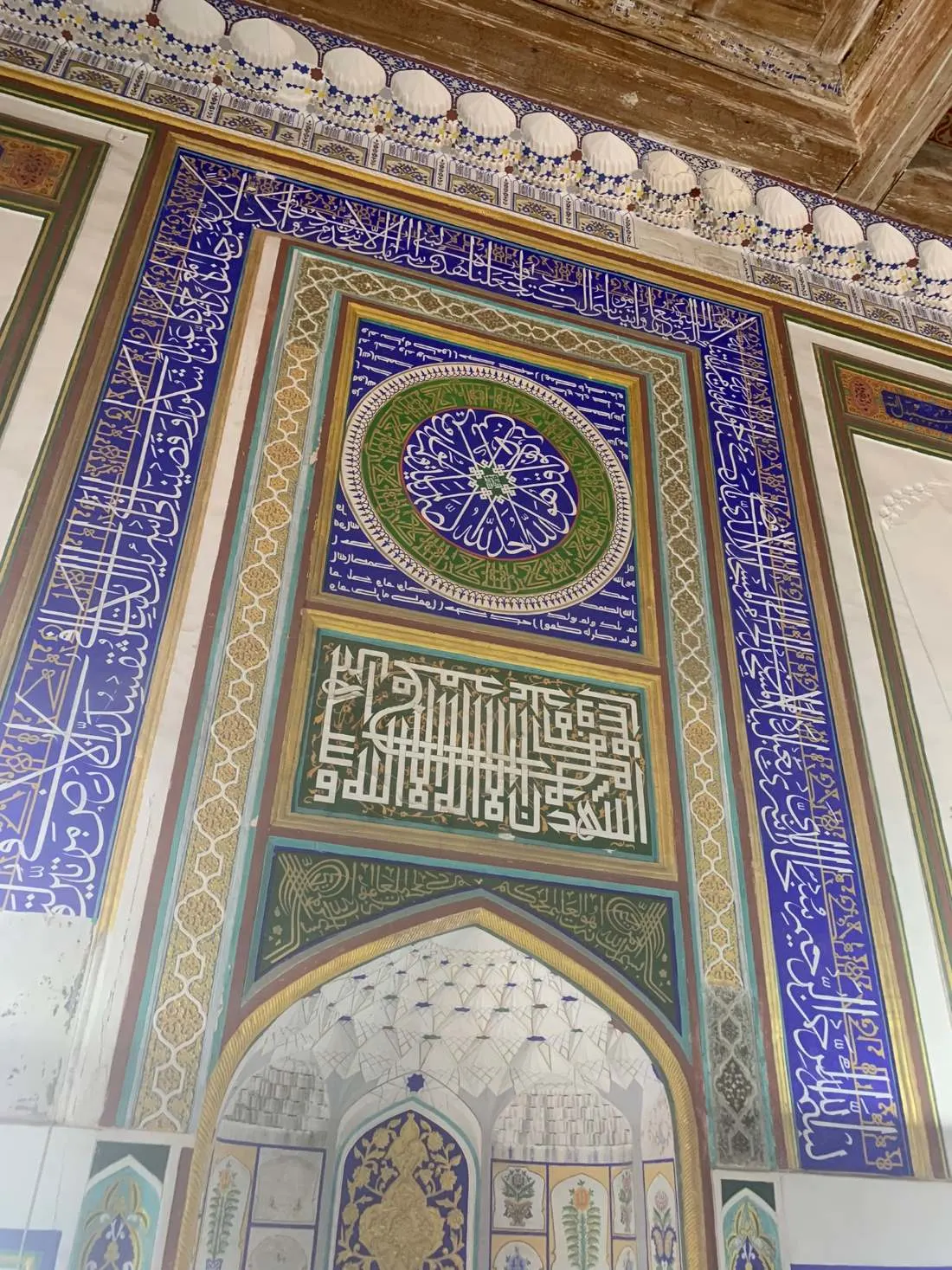
Samarkand’s many mausoleums and mosques are not the kind of places that you should rush through. Trust me on this one – in some cases, you’ll want a few hours to soak in the immense architectural beauty of each site.
Travel tip: When visiting the Registan in Samarkand, allow enough time for two visits. Come once in the daytime to enter the madrasahs, and once in the evening to admire the colorful light displays.
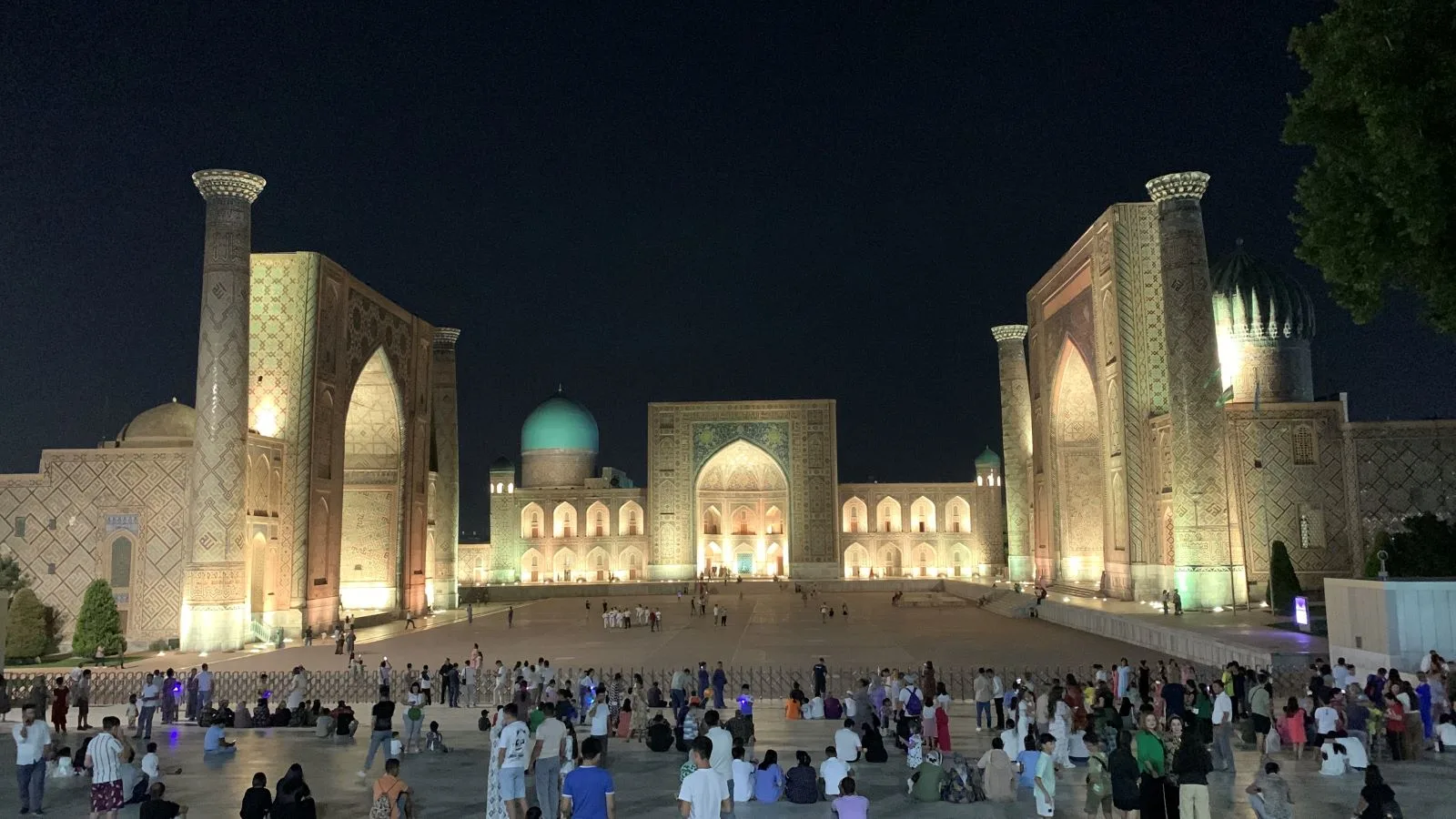
Best accommodation in Samarkand
As Uzbekistan’s touristic drawcard, Samarkand has a large selection of places to stay, to suit all budgets.
For mid-range accommodation in an excellently appointed location, just behind Registan Square, I can personally recommend Hotel Minor. Admiring the view from the roof terrace is one of those travel experiences you will never forget.
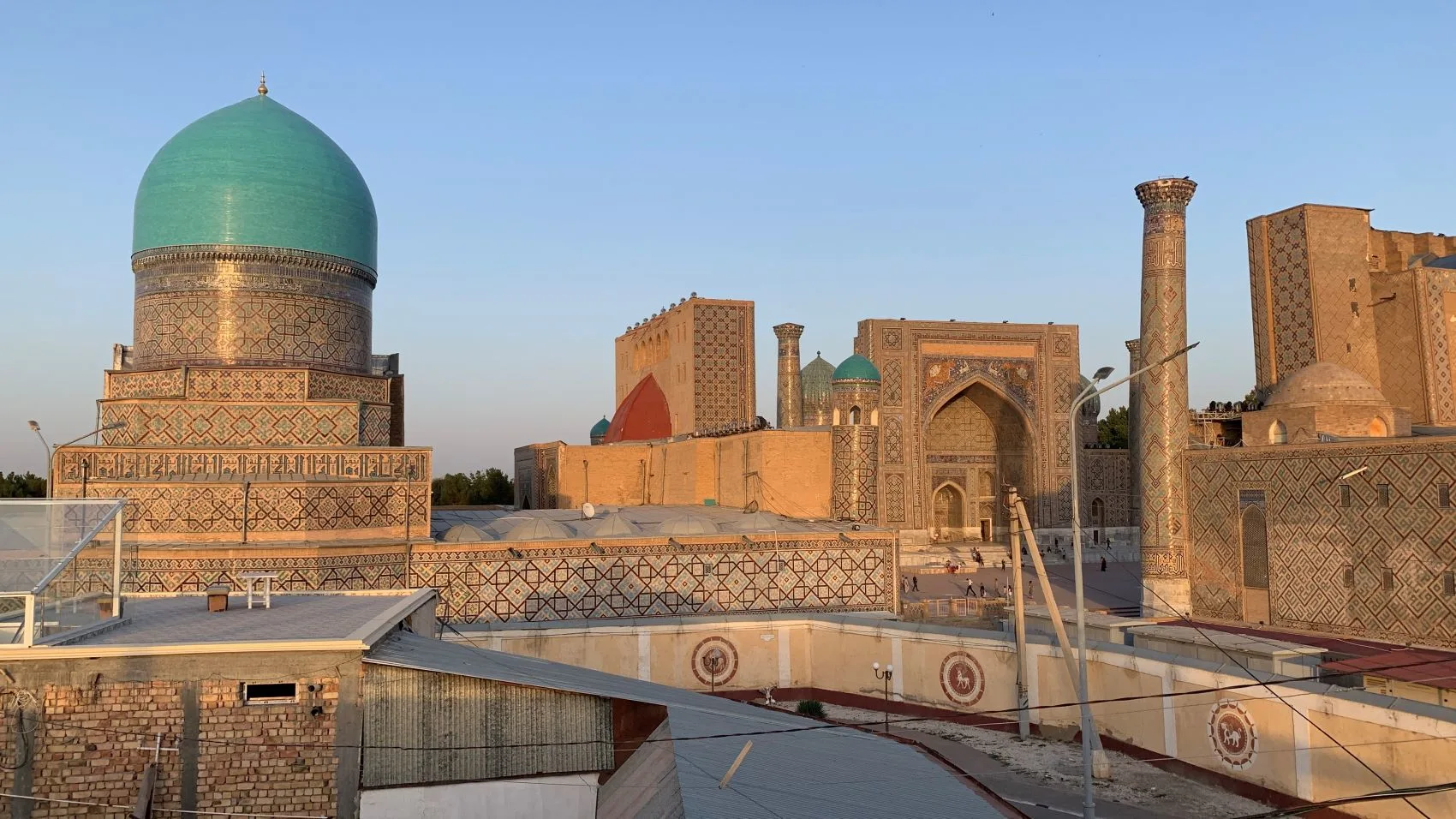
Day 4: Excursion to Shakhrisabz
Tamerlane is perhaps the most towering figure of Samarkand’s history, and the small city of Shakhrisabz has many sites dedicated to his memory and that of his family members. At under two hours from Samarkand, Shakhrisabz is a worthy day trip, and should feature on your Uzbekistan travel itinerary.
Most famously, Tamerlane’s “White Palace”, the Ak-saray, is the star attraction of Shakhrisabz. Be sure to read about the legends related to its construction, design and significance with Tamerlane’s reign. The colorful mosaics which adorn its imposing walls are incredibly impressive.
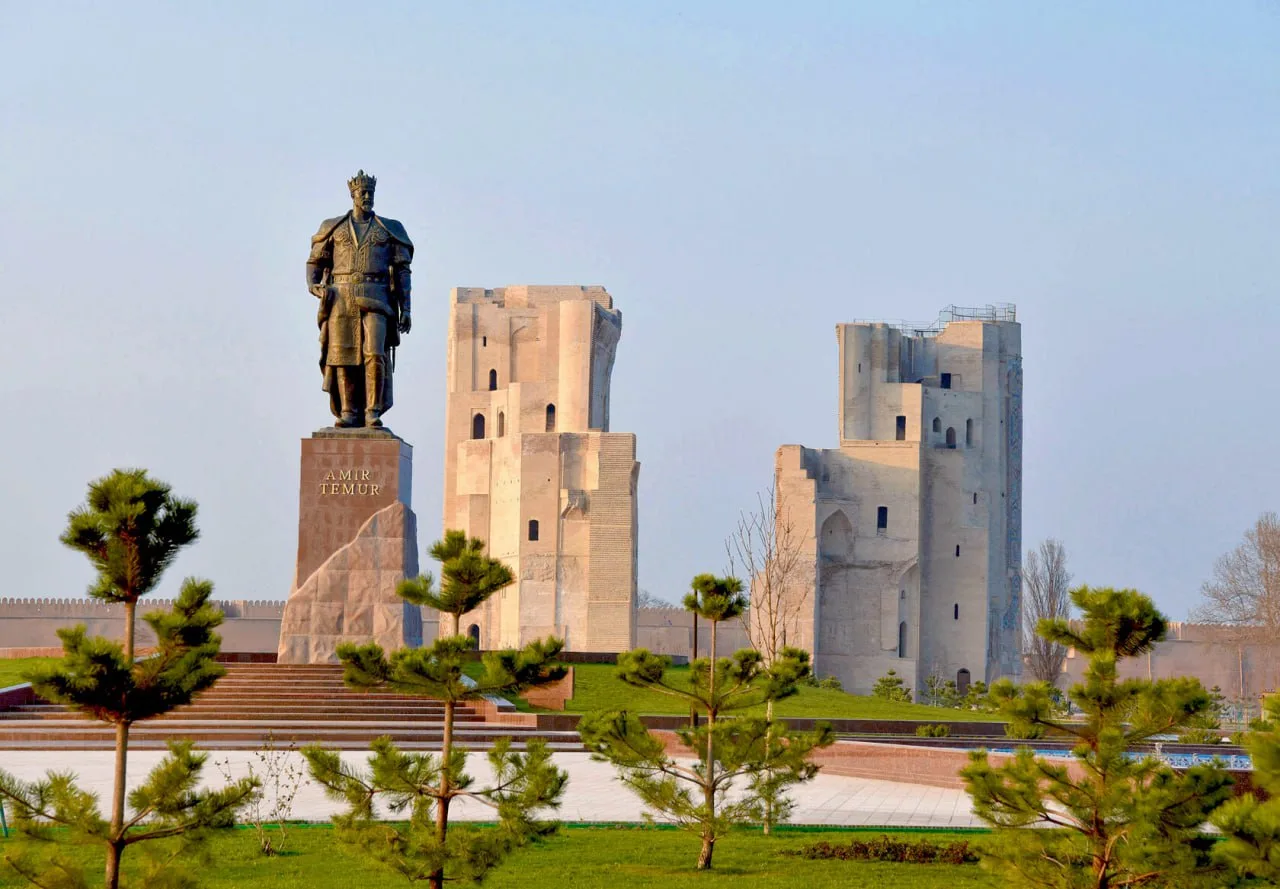
Another colorful edifice in Shakhrisabz is the Dor-Ut Tilovat Complex. And while it’s notably less brightly adorned than the city’s other sights, leave some time to visit the mausoleum of Dor-Us Saodat.
To get here, either take a shared taxi from near the Registan or, much easier, join an organized tour.
Day 5-6: Bukhara
Some people say the great Silk Road cities get even more impressive as you head further west. This was probably spoken with Bukhara in mind. While I find it hard to compare which city is “better”, Bukhara has a slightly more peaceful atmosphere than Samarkand, perhaps making its historical core feel more untouched or, dare I say it, “exotic”. But either way, the incredible architecture of Bukhara makes it an essential stop on your Uzbekistan travel itinerary.
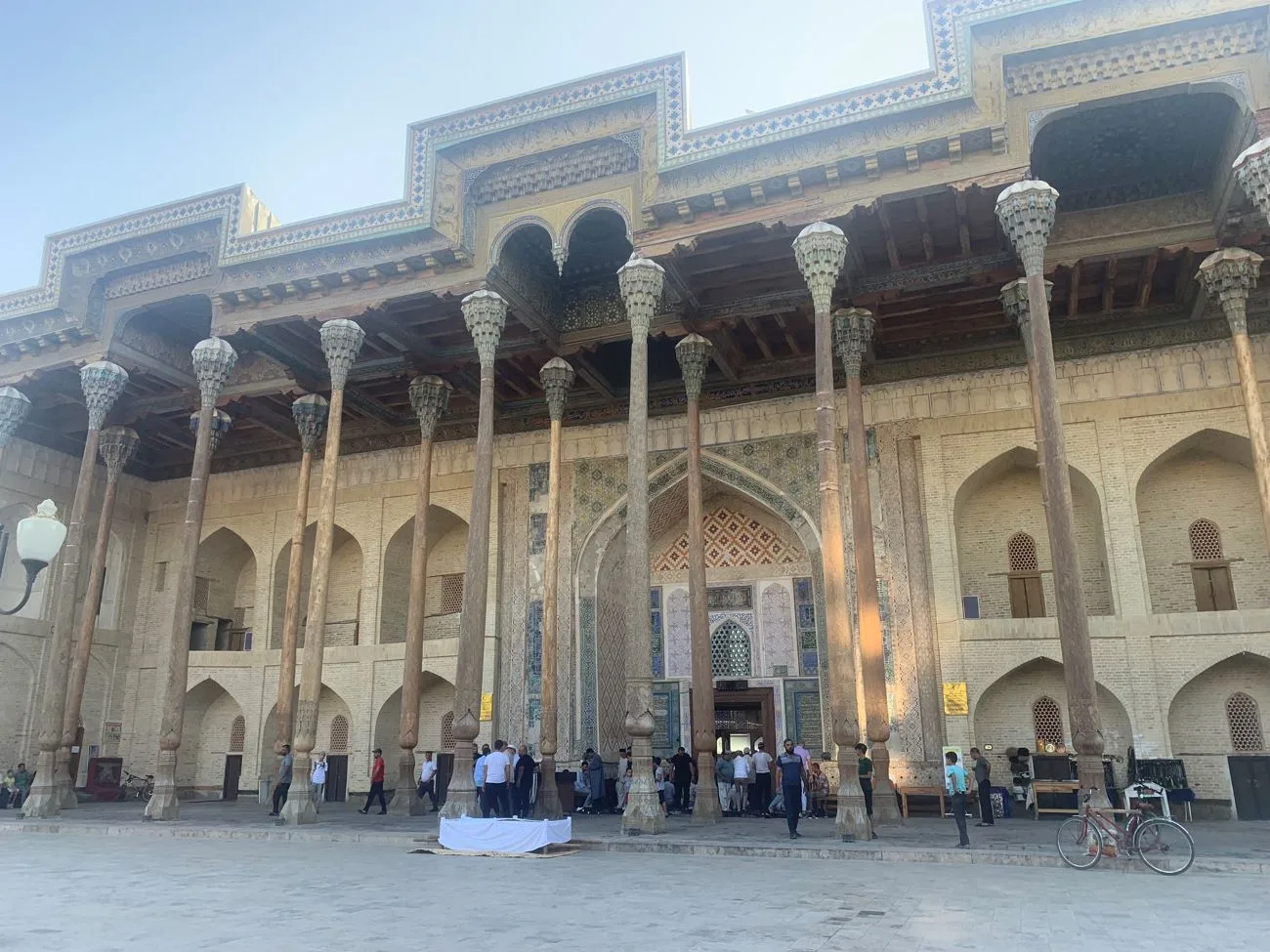
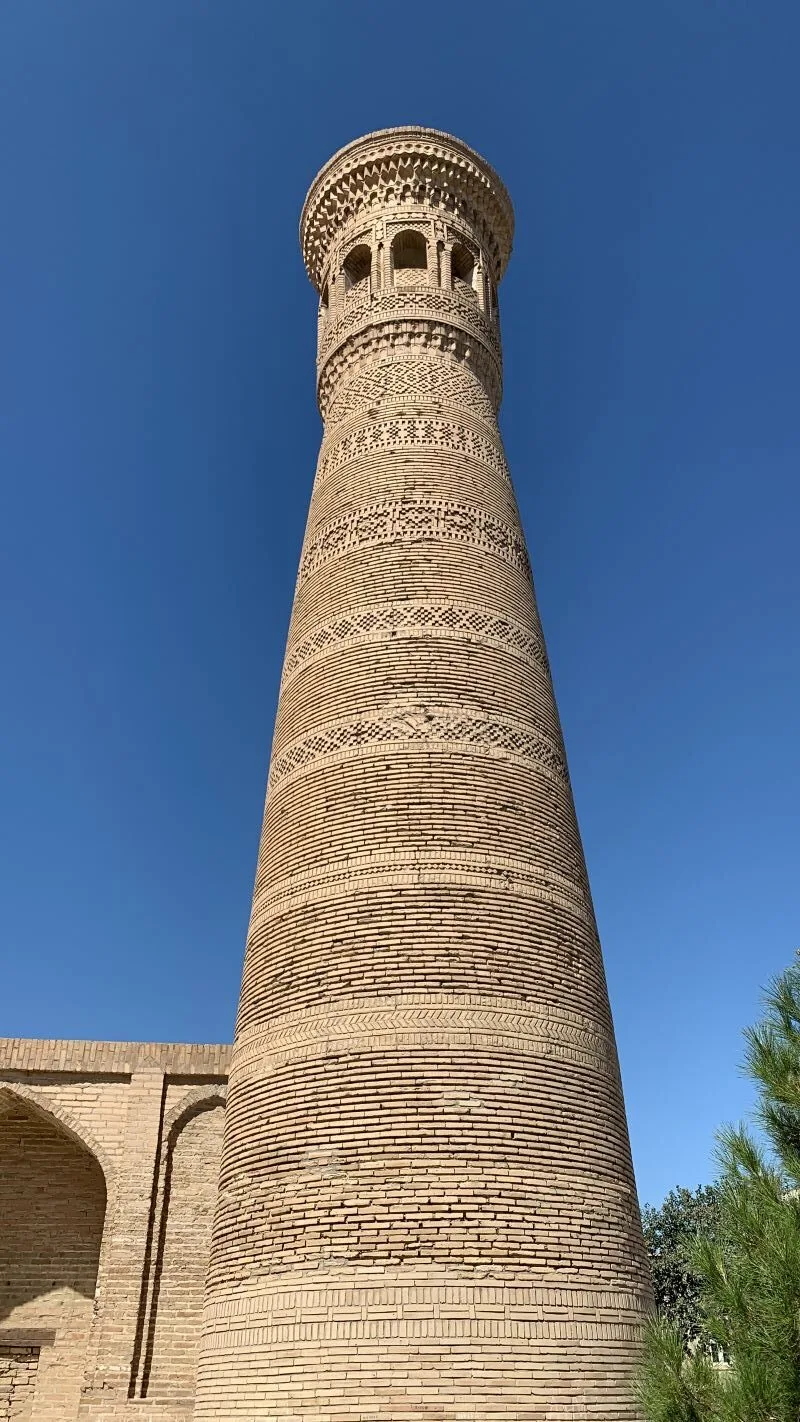
Top sights in Bukhara
Bukhara’s star landmark is the Kalyan Minaret, a 46-meter-tall brick tower outside an equally impressive mosque of the same name. As recently as the early twentieth century, accounts of foreign travelers described the minaret in gruesome detail, as criminals would be thrown from the top, plunging to their death.

Also in Bukhara you’ll find the Ulug Beg Madrasah (the oldest madrasah in all of Central Asia) and the Lyab-i Hauz complex of madrasahs, plazas and water pools. Also stop by the synagogue, one of the legacies from the renowned community of Bukhara Jews.
As for the Ark of Bukhara fortress, the edifice is impressive enough from the outside. The exhibitions inside are not particularly memorable, so it’s no problem to give this one a miss.
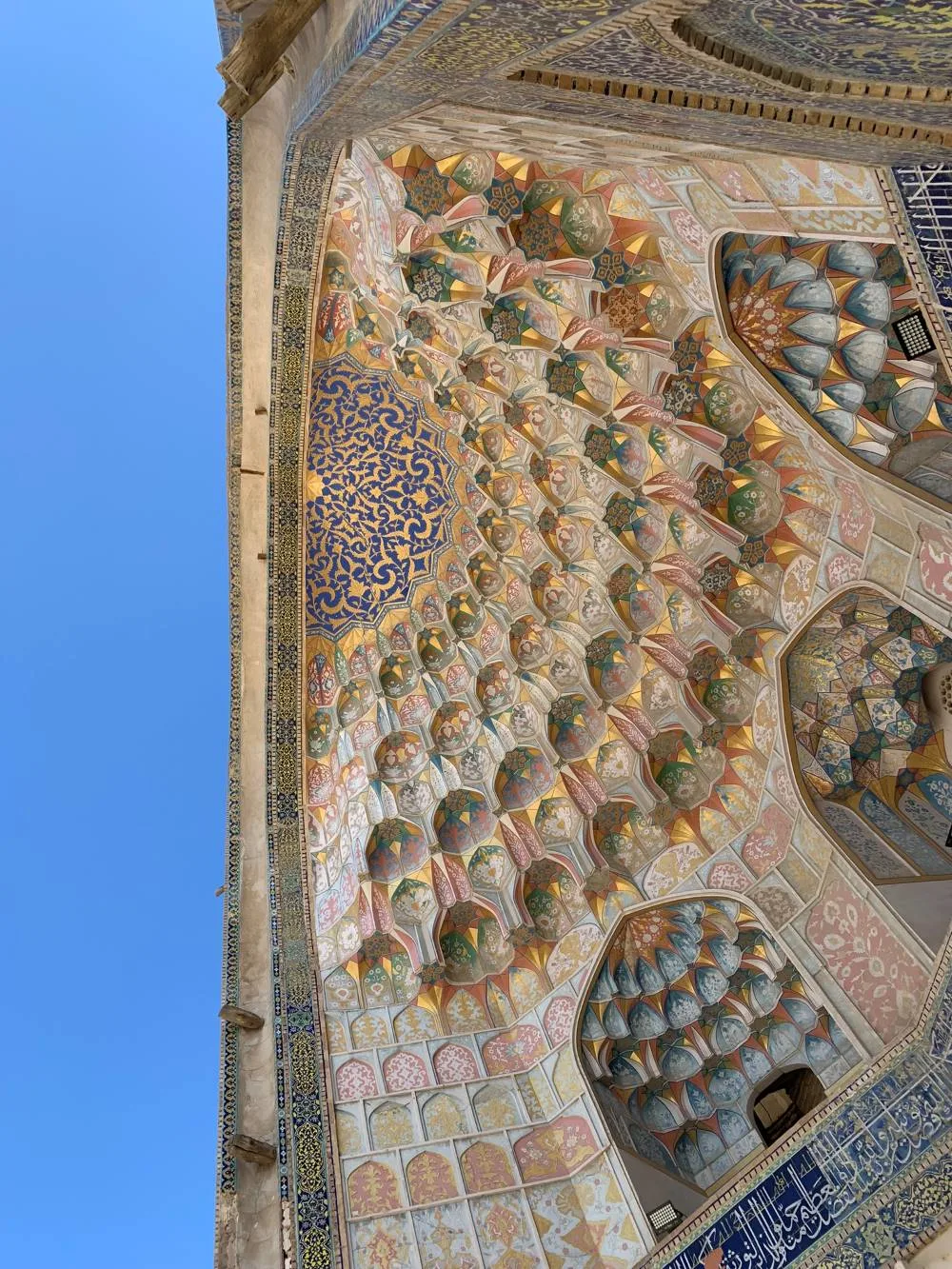
Best accommodation in Bukhara
If you get a chance, very little can beat the Nanosh East Hotel and the jaw-dropping skyline of Bukhara’s madrasahs from its rooftop.
Otherwise, there are plenty of peaceful guesthouses and boutique hotels ideally located in the alleyways south of Lyab-i Hauz. Breshim is one of these options which I can personally recommend.
Day 7: Khiva
The westernmost of Uzbekistan main Silk Road cities is Khiva, close to the present-day border with Turkmenistan. The high-speed railway doesn’t extend this far. To get to Khiva, you’ll have to take a much slower train, brave the 450km journey by car or minivan, or fly to Urgench before taking a taxi to Khiva itself. It might be better to book a private transfer which takes you to some more attractions en route.
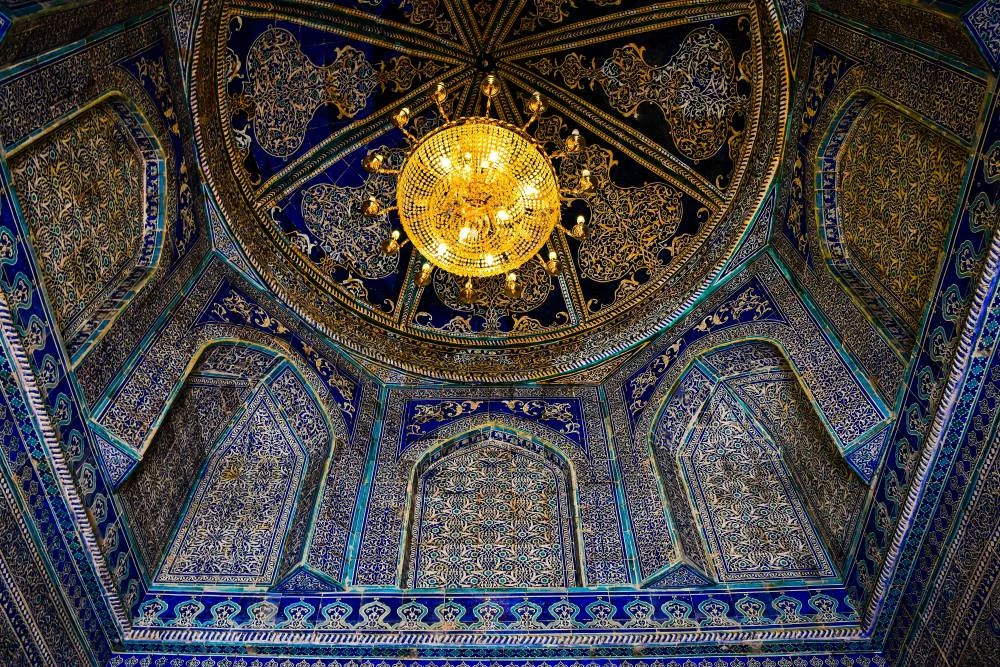
Top sights in Khiva
The compact walled old town, known as the Ichon-Qala, contains most of Khiva’s principal attractions. The Pahlavan Mahmoud mausoleum, Tash-Hovli Palace and Islam Khoja Minaret are yet more stunning examples of Silk Road architecture.
However perhaps Khiva’s most eye-catching building is the Kalta Minor Minaret, just beside the Mohammed Amin Khan madrasah. This wide, slightly bulging tower looms sturdily over the city, and is meticulously tiled entirely in turquoise and blue patterns.
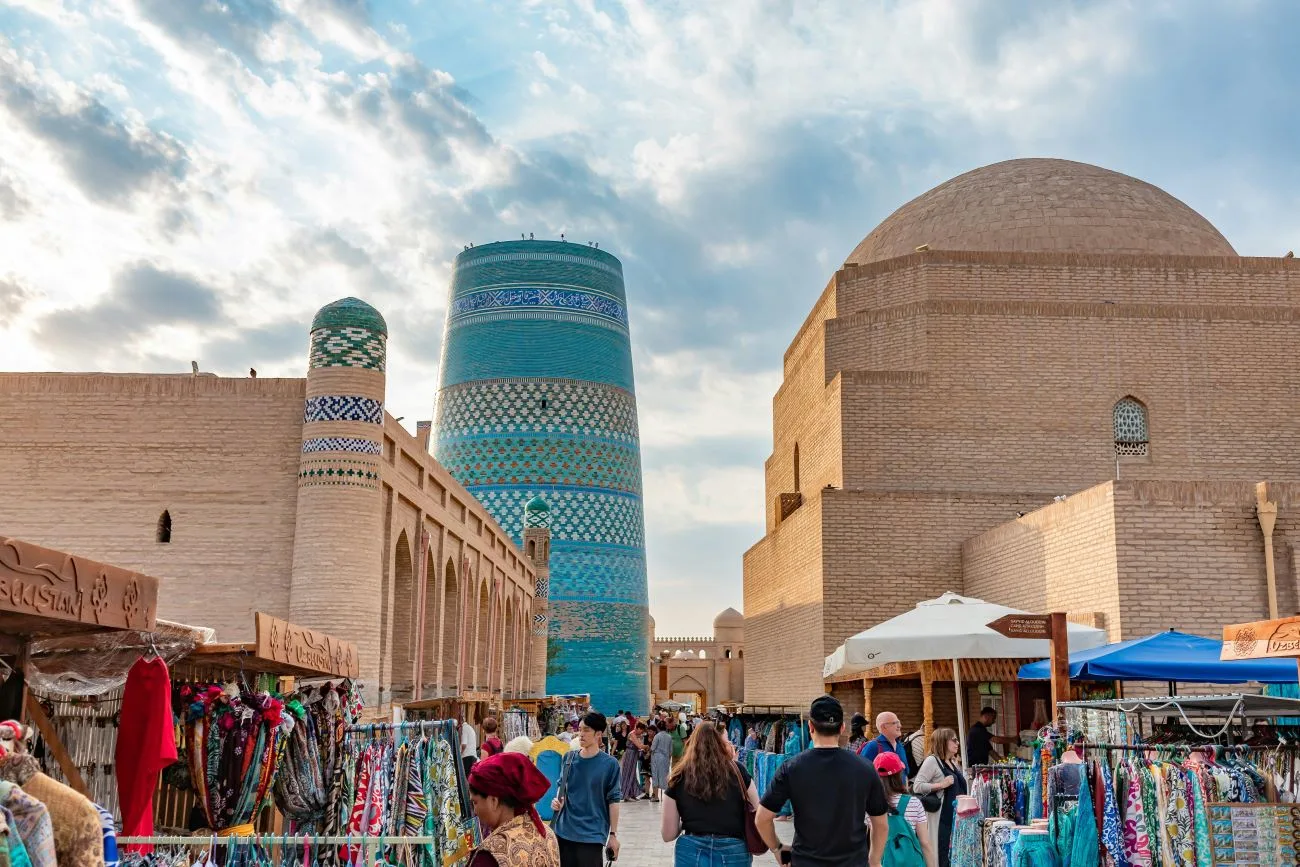
The Ichon-Qala’s pedestrian streets are mostly lined with vendors selling local crafts and artwork. Most of the 300-or-so families still inhabiting this district are descendants of artisans who have lived here for centuries.
Best accommodation in Khiva
Try to get a room at the Khiva Siyovush Hotel, which boasts excellent views of the Khiva skyline. Alternatively, the Khiva Ibrohim Guesthouse is right in the center of the action.
Extend your Silk Road adventure
Your seven-day Uzbekistan travel itinerary has introduced you to only the most essential Silk Road destinations. Since you will have only just scratched the surface of Central Asia’s heritage, if time allows, choose from the following options to deepen your experience of the region.

1. For lovers of dissident Soviet artwork: Nukus
Even further west from Khiva and Urgench is Nukus. Truly remote, only in such an isolated location could an art gallery as daring as the Karakalpak Museum of Arts (alternatively known as the Igor Savitsky Collection) possibly survive.
Thousands of works of politically critical art are on display here, all created in a time of immense creative repression. This is by far the most unique and compelling museum in all of Uzbekistan (and probably Central Asia). Many people consider the gallery to be reason enough to make it all the way out to Nukus.
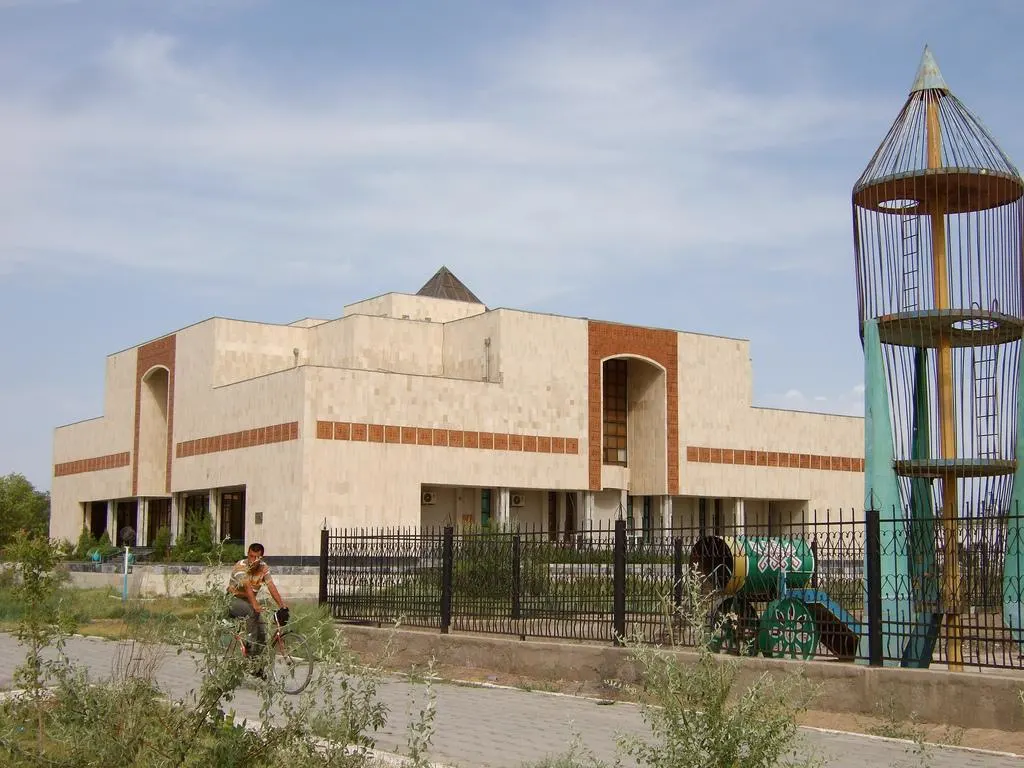
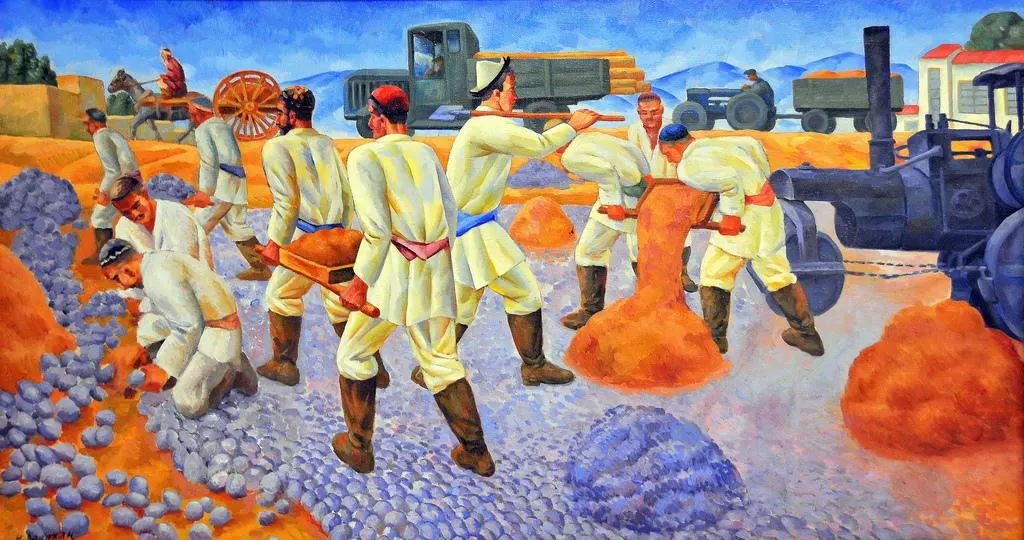
2. For deeper explorations into Central Asia: Cross to Turkmenistan
Since you’re already in the west of Uzbekistan, plenty of adventures and discoveries can be found in Central Asia’s most mysterious and evocative country – Turkmenistan. You also might as well call by Nukus (above) before crossing the border at Konye-Urgench. The famous Darwaza Gates to Hell are directly south from this border crossing.
You’ll need all your paperwork, visas and guides in order, but luckily we have years of experience arranging Turkmenistan tours. You can contact us for more information.



3. For the Fergana Valley culture: Andijan (Uzbekistan) and Osh (Kyrzgystan)
After backtracking all the way to Tashkent, hop on another regular train to Andijan, in Uzbekistan’s historically important Fergana Valley. This was one of the various routes along which trading caravans passed between China and Europe. As such, Andijan occupied a strategic position as a trading center and rest stop.
For the modern traveler, Andijan has pleasant parks, the Devonaboy Masjid and few bustling markets. You can buy silks here from Margilan, another nearby city famed for its commerce and fabric production.
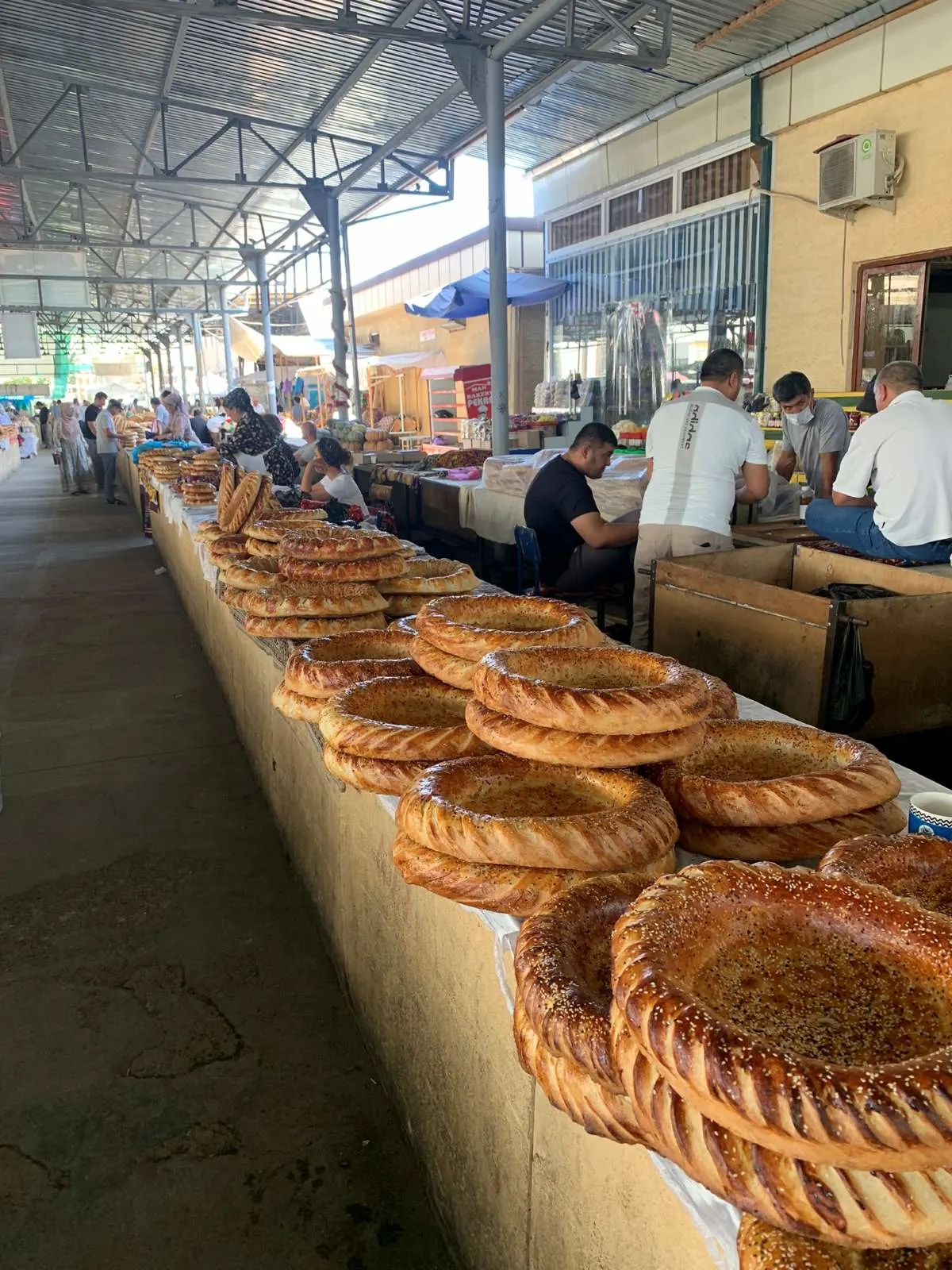
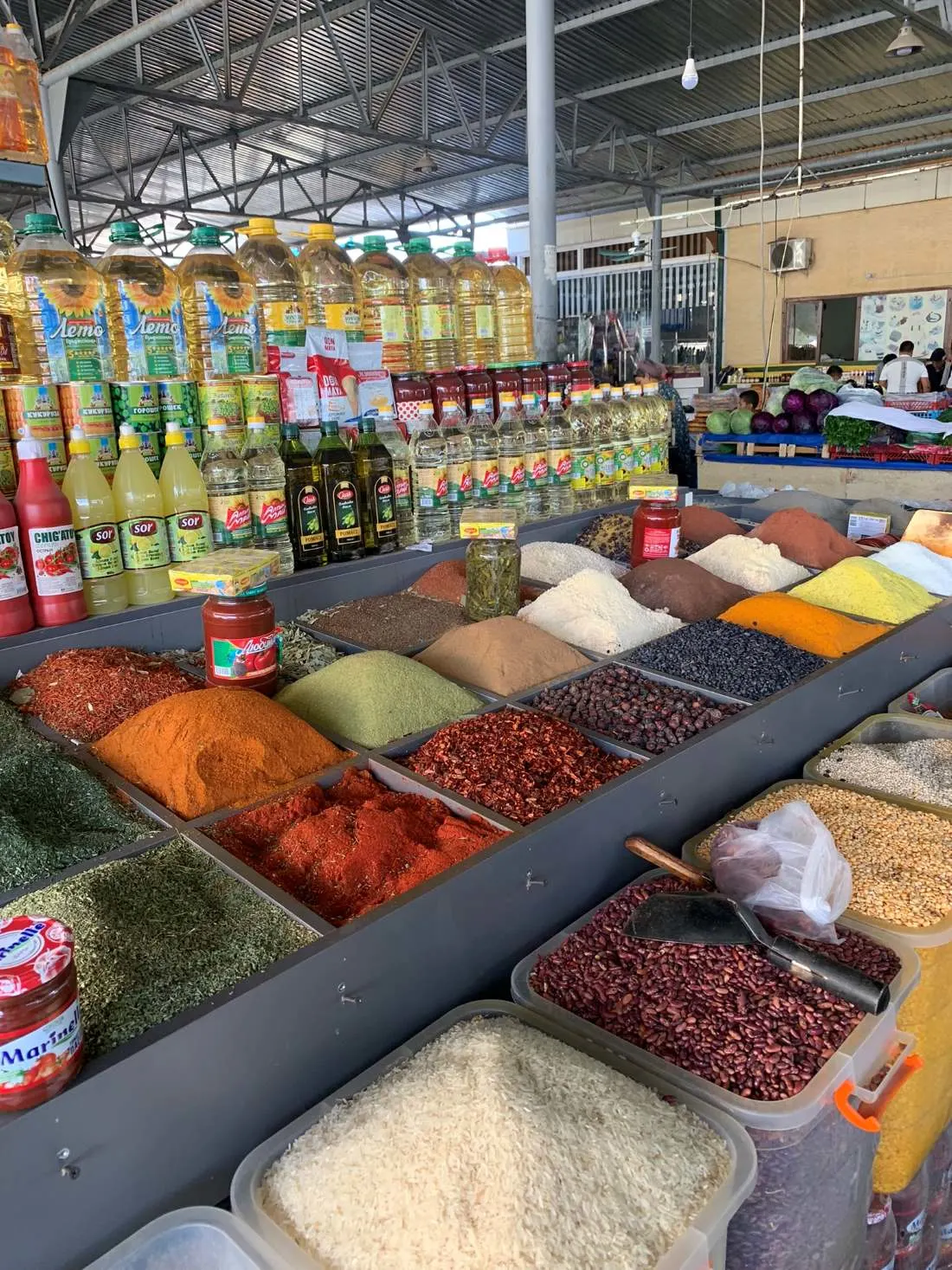
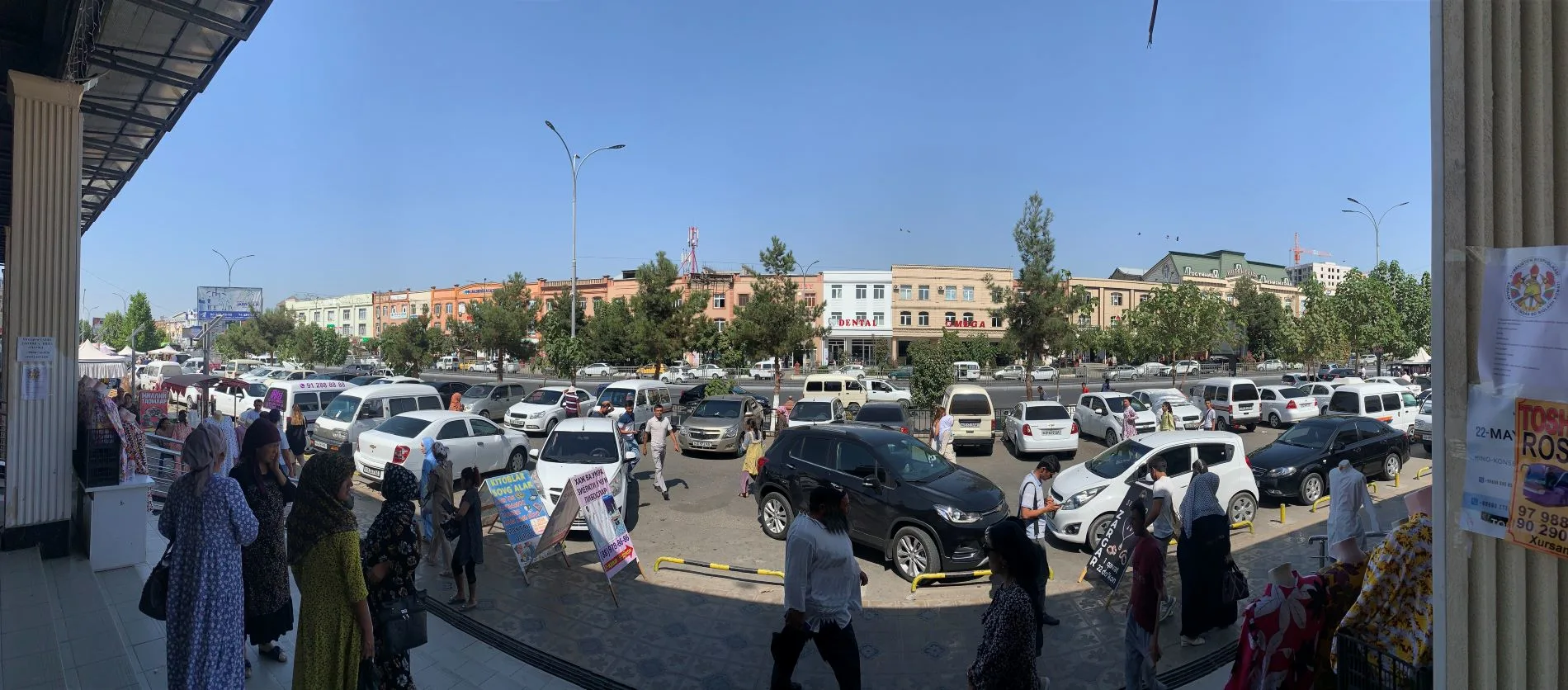
This southeastern corner of Uzbekistan links conveniently with the incredible country of Kyrgyzstan. Osh, a Kyrgyz city just over the border, is the home of the sacred Islamic mountain of Sulayman Too. This is purported to be the resting place of the Quranic prophet Sulayman. For those up for adventure, Osh also serves as the gateway to the breathtaking Pamir mountains in Kyrgyzstan.
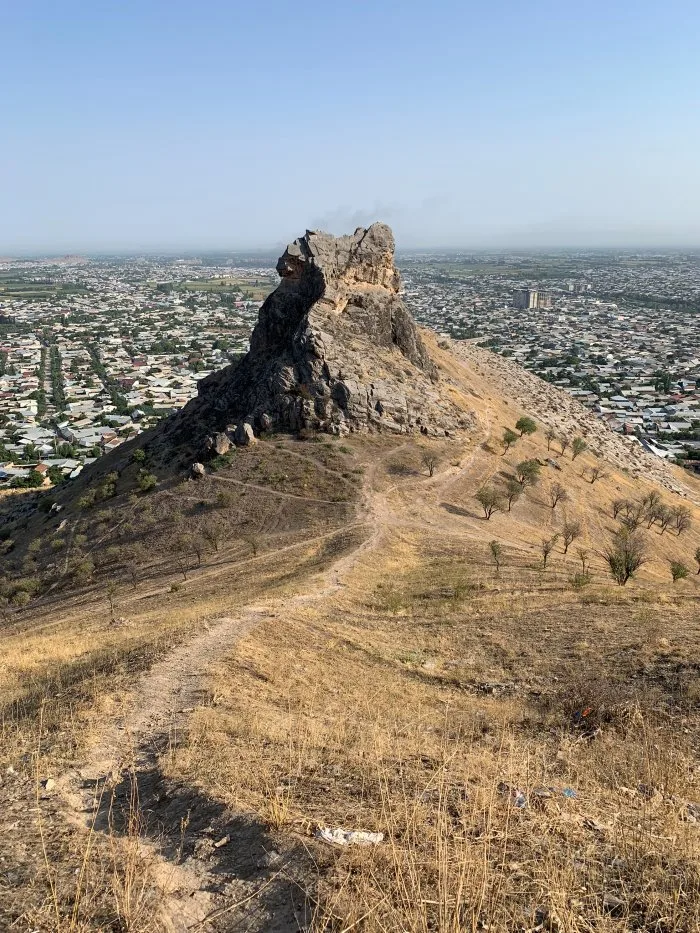
Share This Article

Traveling soon? Subscribe to The Insight below and get exclusive access to our personalized travel advice community via WhatsApp so you can ask all your burning travel questions.
Looking for the best comprehensive travel insurance? SafetyWing has you covered.
And for your eSIM in every country, there is only one option we recommend: Airalo.
Read more of our best insights from around the world
